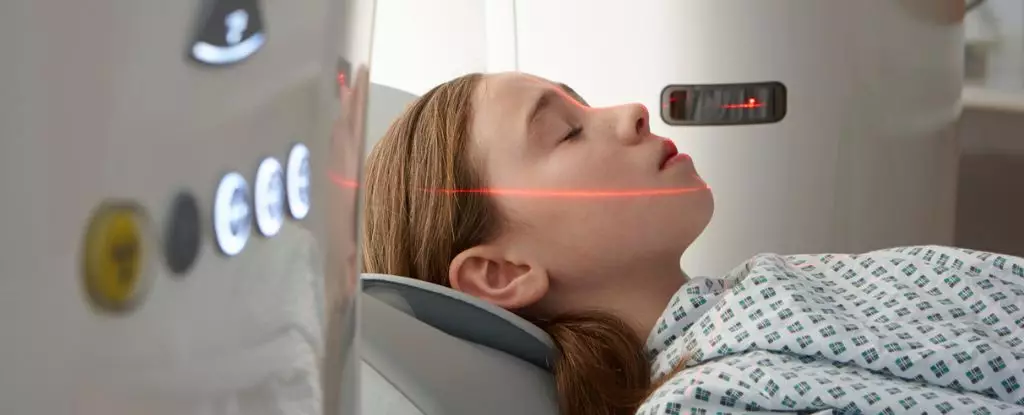In recent years, the healthcare landscape in the United States has witnessed a staggering surge in the utilization of computed tomography (CT) scans, sparking both enthusiasm and apprehension. The statistics are striking: since 2007, the number of annual CT examinations has jumped by over 30 percent. This surge has primarily been fueled by the imaging technology’s ability to detect various medical conditions rapidly and effectively. However, with this advancement comes a pressing concern: the potential long-term effects of low doses of ionizing radiation on public health. While these scans can be lifesaving when used judiciously, the question arises: Are we inadvertently compromising our long-term well-being by exposing ourselves to increased cancer risk?
The Theoretical Cancer Risk: Fact vs. Fear
The theoretical risk of developing cancer from a CT scan is often deemed insignificant on an individual basis. For most patients, particularly when scans are deemed necessary by medical professionals, the benefits can outweigh concerns. Yet, a growing body of research indicates that the cumulative effect of these scans may not be as benign as once thought, especially when examined through the lens of population-level data. A recent analysis predicts that CT scans conducted in a single year could potentially contribute to around 5 percent of all new cancer cases in the US, equating to approximately 103,000 future cancer diagnoses. This might position CT scans alongside significant risk factors like alcohol consumption regarding collective cancer risk, complicating the narrative that such medical interventions are without consequence.
Examining the Evidence: Historical Contexts Shape Modern Understanding
The ongoing debate about the link between low-dose radiation and cancer isn’t just speculative; it emerges from empirical studies on specific populations exposed to far higher radiation levels, such as atomic bomb survivors. However, translating these findings to the realm of CT scans, which deliver considerably lower doses of radiation, poses challenges. For instance, research highlighting the cancer risk for Hiroshima survivors is indeed valuable, yet it remains unclear if the same principles apply to patients undergoing CT scans. The disparity in exposure levels makes drawing direct comparisons complex and the conclusions fraught with uncertainty.
Advancements in Technology vs. Patient Safety
The advancements in CT technology cannot be ignored. Modern scanners deliver diagnostic imaging with radiation levels comparable to what one is naturally exposed to over a span of several years. These advancements, coupled with a more precise understanding of factors influencing radiation exposure—such as the type of CT machine, scanning parameters, and patient demographics—offer significant promise. Yet, with over 93 million scans projected to occur in 2023 alone, it raises the question: at what cost do we enjoy these technological benefits?
At-Risk Populations: Vulnerability and Oversight
Children and adolescents appear to be the most vulnerable demographics when it comes to radiation-induced cancer risk. It’s particularly alarming to note that infants receiving CT scans exhibit a markedly heightened potential for developing thyroid cancer later in life. This demographic reality emphasizes the necessity for a more nuanced approach to medical imaging, taking into account the age and overall health of the patient. As healthcare practitioners, a dutiful and rigorous assessment of whether a CT scan is warranted becomes all the more critical, especially for the younger population.
Global Perspectives and the Call for Caution
Internationally, the conversation mirrors that of the United States, with healthcare professionals calling for vigilance in the use of CT scans. Experts, including radiation specialists and medical imaging professionals from Australia, echo similar sentiments emphasizing the necessity of procedural justification. It is a call for a more parsimonious approach to imaging: ensuring that radiation-free alternatives are explored when available. Not all medical scenarios warrant a CT scan; sometimes, a thorough physical examination or an alternative imaging method may suffice.
The dialogue surrounding CT scans and their potential long-term implications should remain open, progressive, and rooted in ongoing research, as it is integral to enhancing public health outcomes while minimizing unwarranted risks. As we move forward, it is essential to balance the undeniable benefits of CT technology with a persistent vigilance regarding its inherent risks, particularly for vulnerable populations. The path forward requires a concerted effort among medical professionals, researchers, and public health advocates to develop practices that adequately safeguard our health without forgoing essential diagnostic innovation.


Leave a Reply